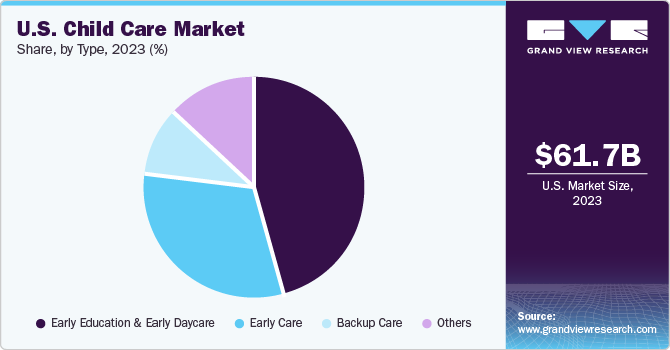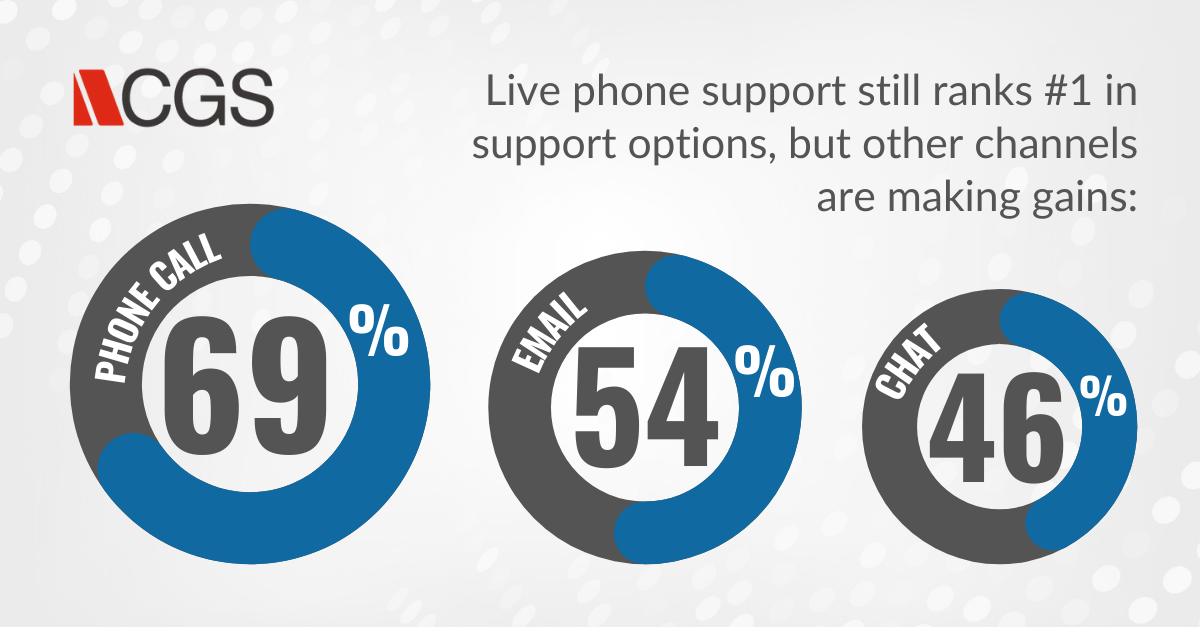The after-school industry has room for growth. Since COVID-19, the industry has taken a hit, seeing a decline in value of 1.7% per year between 2018 and 2023. Despite this, the industry reached a $23.9 billion evaluation in 2023.

With careful planning around location, staffing, activities, and budget, your center can thrive while making a difference for families. The opportunities abound if you approach this in the right way.
This guide will walk you through how to start a after school program. Topics include market research, competitive analysis, registering your EIN, obtaining business insurance, marketing, customer service, and more.
1. Conduct After-School Program Market Research
Market research is important to any afterschool program. It provides insight into your target market, top programs serving children, the right curriculum, and the best community centers for extracurricular activities.

Some details you’ll learn through market research on afterschool programs include:
- The majority of parents believe after-school programs should focus on STEM activities.
- Over 10 million children participate in afterschool activities in the U.S.
- Roughly 80% of a child’s waking hours are spent outside of school.
- With the proper due diligence, an after-school program can prove highly prosperous.
- Playgrounds, sports, and other outdoor activities are popular among children in afterschool programs
- Afterschool socialization with peers programs social and emotional support to school-aged children.
- Children’s safety is an important element of any afterschool program business plan.
- Programs with designated space tend to be more highly rated than those based in public recreation centers.
- Different age groups can enjoy afterschool programs in the same space.
- Connecting with local schools is a good step to take when developing afterschool and other programs in childcare.
- Another popular safe place for an afterschool program is local churches.
- Many parents are interested in finding a space with a strong focus on science.
This and other information gleaned through market research on starting an afterschool program will help you craft a quality program. Add these details to your business plan as they become important to your goals.
2. Analyze the Competition
Getting a solid grasp of competitors is imperative when launching an after-school program. Start by identifying existing providers in your geographic area so you can assess offerings, rates, and capacity levels.
Some ways to get to know competitors include:
- Use search engines, small business databases, and chamber of commerce listings.
- For brick-and-mortar sites, schedule visits during after-school hours to evaluate the in-person experience.
- Observe factors like staff-to-student ratios, activities being conducted, facility conditions, and amenities.
- Engage administration if possible to discover enrollment numbers, tuition fees, operating hours and program focuses like homework help, arts, STEM, or recreation.
- Average nationwide rates fall between $100-$250 per month but vary based on your local standard of living.
- Evaluating online presence is equally key in this digital era.
- Search for each provider you identified to analyze platforms across metrics like content quality, ease of use, mobile responsiveness, reviews, and search visibility.
- Check into the specific requirements each competitor has faced regarding teacher hiring, and approving staff to work with kids.
Blending online research with in-person visits yields complete intelligence on direct players. From this, you can identify unmet needs plus service and messaging gaps to exploit with strategic positioning. As you learn how to start an afterschool program, competitive analysis is key.
3. Costs to Start an After-School Program Business
Getting an after-school program up and running requires careful budgeting and capital to cover everything from facility expenses to activity supplies. When planning your finances, factor in both initial investments and recurring overhead to operate smoothly.
Startup Costs
Typical start-up costs fall between $10,000 to $30,000 on average:
- Facility – Leasing an appropriate commercial space represents a significant upfront and monthly expense. Budget $1,500 to $4,000 for first/last months’ rent plus security deposit on a full-time private space.
- Licensing & Permits – Register your business entity and acquire state licenses for childcare operations ($50 to $500+). Some locations may require zoning permits and inspections as well (up to $1,000).
- Technology – Essentials like computers, phones, point-of-sale systems, cameras, and software carry a price tag of around d $1,500 to $3,000.
- Marketing – Quality logo design, website, and promotional materials like signs and fliers to announce your opening run $1,500 to $3,000.
- Insurance – Childcare centers need substantial general liability and accident insurance costing $800 to $5,000 annually at start-up.
- Working Capital – Finally, have cash reserves equal to 2-3 months of fixed operating expenses while ramping up enrollments after opening.
Ongoing Costs
Once up and running, plan for ongoing monthly expenditures:
- Payroll – Staff salaries (tutors, teachers, coaches, etc.) represent up to 60% of an after-school program’s budget. For most centers, this cost lands between $4,000 to $25,000 per month.
- Facility – Aside from rent payments, factor monthly utility bills, cleaning/maintenance, security fees, and general repairs into budgets. These typically add a few thousand more.
- Activity Supplies – Keeping crafts, games, snacks, and learning materials stocked will cost around $500+ per month depending on enrollment.
- Administration/Professional Fees – Expect recurring expenses like accounting help, legal fees, bank charges, advertising, and professional development costs ($200 to $1,500 monthly).
With thorough planning and controlling expenses once launched, an after-school program can produce annual gross profits of around 25%. Let sound budgeting provide financial confidence!
4. Form a Legal Business Entity
When establishing your after-school program, the legal structure you choose impacts everything from day-to-day operations to personal liability. Weigh the pros and cons of common options below to make an informed decision:
Sole Proprietorship
A sole proprietorship constitutes the simplest and most affordable entity as it involves no formal registration. You automatically attain this by default when going into business alone. However, it opens you to unlimited personal liability for debts and legal claims tied to the company.
Partnership
Formalizing a partnership enables multiple owners to combine expertise, effort, and resources. You must still register your business name while establishing a partnership agreement detailing ownership percentages, responsibilities, and profit/loss distribution.
Limited Liability Company (LLC)
For after-school programs, LLCs provide the best mix of protections and operational flexibility. LLC registration shields personal assets from business-related risks and debt. It limits legal exposures and makes the company a separate entity that can open business accounts.
Corporation
Corporations ensure full separation between business and personal finances but come with more complex regulations. Significant corporate recordkeeping and annual filings are mandatory along with higher formation costs. Ownership is designated through stock shares.
5. Register Your Business For Taxes
Before opening doors, formally register your business with state and federal agencies for proper permissions and tax handling.
The first step entails acquiring an Employer Identification Number (EIN) from the Internal Revenue Service (IRS). This unique number essentially serves as your afterschool program social security number for tax purposes. After-school programs need an EIN even if not hiring employees right away.
Thankfully obtaining an EIN takes just minutes online. Simply navigate to IRS.gov and search “apply for an EIN”. Complete their brief questionnaire providing basic information about your LLC or corporation entity when prompted.
Submission of details like company name, address, accounting practices, and ownership structure generates your EIN instantly onscreen upon review. This free process also requires deciding your tax year-end date – often December 31st for childcare centers. Be sure to specify if you are a nonprofit organization.
While no special tax exemptions exist specifically for the after-school industry, you can deduct ordinary expenses like rent, supplies, payroll, and more. Track all expenditures from the start for claiming maximum write-offs.
6. Setup Your Accounting
With countless financial transactions from tuition payments to supply purchases, sound accounting principles built early provide the foundation for success. Choose user-friendly systems and professional guidance to keep your finances reconciled and IRS-compliant.

Accounting Software
Begin by implementing small business accounting software like QuickBooks for automated tracking. QuickBooks seamlessly syncs with bank accounts and credit cards to import and categorize transactions, allowing you to generate financial statements with ease.
Hire an Accountant
Partnering with an accountant alleviates administrative headaches so you can focus on students. even if only consulting annually for taxes. A bookkeeper can further assist with monthly reconciliations, payroll, and mandatory filings for around $300-$1,000 depending on workload.
Open a Business Bank Account and Apply for a Credit Card
Choose a dedicated business checking account for all after-school financials the moment you register your LLC. Keeping personal and company funds separate simplifies reporting requirements and prevents commingling which could forfeit liability protections. Apply for a business credit card as well.
7. Obtain Licenses and Permits
While eager to open your doors to students, pause to acquire essential documentation granting legal permission to operate. Find federal license information through the U.S. Small Business Administration. The SBA also offers a local search tool for state and city requirements.
Start by checking your state regulations to determine if a childcare license is mandatory or if certain exemptions apply for more informal after-school formats. For example, some locations only require licensing once caring for children aged 13 and up.
If needed, submit a comprehensive application to your health and welfare department including background checks, facility details, operating plans, enrollment policies, and staff information (like driver’s licenses and training certificates).
You’ll also need food establishment permits if serving daily snacks or meals. These stipulate health precautions for prep/handling plus allergy protocols. Staff may require extra personal certifications like CPR, First Aid, and ServSafe Food Handler screening as well.
Check if program curriculums or transportation triggered added approvals. Special education services, field trips, or vehicle use prompt further licenses around safety, training, and reporting. Remain vigilant with expiration dates as well should permits mandate periodic renewal.
8. Get Business Insurance
Given the hands-on nature of after-school care, prioritize protecting your company and assets with tailored insurance policies. They safeguard what you’ve built should the unpredictable occur.
General liability coverage is essential to cover injuries affecting students, staff, or facility damage. Imagine a child tripping on uneven pavement and needing urgent care, costing thousands without insurance. Or an electrical fire forcing sudden relocation for weeks mid-semester.
Choosing the right insurance provider needs assessment. Compare policies and price points to find coverage that fits your business, both in terms of your financial goal and potential risks.
Obtain quotes through providers like Travelers, State Farm, and The Hartford. When applying, have your business valuation, enrollment count, hiring plans, and existing safety and security protocols handy for accurate pricing. Higher deductibles help control premiums as well.
9. Create an Office Space
While most after-school programs operate onsite, securing administrative workspace helps coordinate planning, marketing, and payroll off the floor. Whether at home or a commercial locale, ensure your office meets storage, productivity, and budget needs.
Home Offices
Utilizing a spare bedroom or basement makes for affordable back-office headquarters. Multitask calls, digital marketing, and parent inquiries between site visits. Just be mindful of noise and distractions from others at home that can hamper efficiency.
Coworking Spaces
Shared community offices like WeWork offer movable desks, conference rooms, printing, and even networking events for just $300 monthly. Most limit onsite storage but provide flexible terms and turnkey functions to test ideas before committing.
Commercial Office
For established programs, leasing standalone office space keeps records, materials, and valuables securely consolidated while projecting stability to parents. Expect a 3-5 year lease at $1,000-$1,500 monthly for a modest 750 sq ft locale. Outfitting with furnishings and supplies requires an extra $5,000 upfront.
10. Source Your Equipment
Outfitting your facility with age-appropriate furniture, safety gear, recreational setups, and learning tools ensures a nurturing environment for students. Balance affordability with durability when sourcing essentials through the following channels:
Buying New
While pricier, purchasing new equipment directly from retailers like Lakeshore Learning enables customizing classroom layouts precisely as envisioned. Cater orders around pedagogical priorities whether STEM materials, reading nooks, art supplies, or sports gear.
Buying Used
Gently-used materials help limit startup costs substantially when every dollar counts. Scout deals through Facebook Marketplace, Craigslist, and parent exchange groups for themed toys, activity mats, easels, and more. Budget $500-$2,000 for outfitting needs.
Renting and Leasing
If lacking upfront capital, renting supplies initially allows for securing fundamentals fast without large outlays. Rentalia, American Rent-All, and national chains offer flexible short-term agreements for items like chairs, shelving units, and outdoor playsets for nominal monthly fees.
11. Establish Your Brand Assets
Crafting a distinctive brand identity helps your program stand out while projecting professionalism to parents from the start. Define visual assets and contact points that reinforce excellence in education and care.

Getting a Business Phone Number
Acquire a dedicated business line through a provider like RingCentral instead of relying solely on personal cell phones. Toll-free availability, customized greetings and seamless call routing to staff uphold accessibility and image for around $30 monthly.
Creating a Logo and Brand Assets
A polished logo encapsulates your program’s strengths at a glance – whether emphasizing nurturing teachers, academic enrichment, or character building. Explore concepts through user-friendly DIY sites like Looka that apply studio-level design based on your vision, brand characteristics, and preferences for around $65.
Creating Business Cards and Signage
Business cards enable the quick sharing of essential contact and program details during tours, open houses, and networking events. Vistaprint offers affordable packages that include coordinating postcards, brochures, and banners for promoting enrollments.
Purchasing a Domain Name
Secure your chosen name for a one-stop online destination family can easily recall. Sites like Namecheap facilitate browsing availability and registering domains affordably from $12-$15 annually. Opt for .com over alternate extensions.
Building a Website
Contract web developers on freelance marketplaces like Fiverr to craft a custom responsive website highlighting your services, philosophy, and enrollment information. Expect around $500+ for multi-page sites. Those hesitant to outsource can utilize intuitive DIY platforms like Wix for basic sites.
12. Join Associations and Groups
While hands-on work with students comes first, networking with industry peers helps unlock program improvements through idea exchanges and camaraderie. Finding an afterschool alliance to join provides a network task force of sorts to lean on for guidance.
Local Associations
Joining state childcare associations like the California Child Care Resource & Referral Network keeps you abreast of trends, events, and regulatory considerations. Membership fees of approximately $50-$150 annually come with access to staff training discounts, referral services, and safety resources.
Local Meetups
Keep a pulse on community happenings relevant to after-school owners by using event sites like Meetup. From parenting workshops to education conferences nearby, staying engaged raises the visibility of your program and instills helpful takeaways to implement. This is a great resource for newcomers.
Facebook Groups
With over 1 billion users, Facebook facilitates finding niche communities easily. Search groups like Before/After School Care Professionals to uncover pressing issues and neighborhood dynamics relevant to business operations. Learn from other afterschool programs about getting nonprofit status, youth group events, funding, and more.
13. How to Market an After-School Program Business
Effective marketing keeps enrollments filled so your program thrives. Leverage digital platforms and community connections to boost awareness from the start.

Personal Networking
Begin with your network, the most valuable asset of a new business. Encourage colleagues, friends, and family to help spread the word. Offer 10% tuition discounts for referrals that enroll. Word-of-mouth drives growth in hyperlocal services like child care.
Digital Marketing
- Run Google and Facebook ads geotargeting local parents. Highlight safety, enrichment activities, and convenience with flexible pickup times after work. Expect to budget $100-$300 monthly while testing messaging.
- Start an Instagram feed with photos capturing activities, learnings, field trips, and fun. This provides a visual showcase of the daily experience to aid decisions.
- Create a channel on YouTube for sharing program overviews, virtual tours, staff introductions, and highlights of special events or curriculums. Help parents envision sending their child.
- Publish a monthly newsletter covering themes, upcoming activities, staff spotlights, student features, and family resources on topics like nutrition or reading skills. Offer a subscription on your website.
Traditional Marketing
- Print eye-catching flyers and distribute them through schools, libraries, family-centric retailers, and pediatric offices detailing offerings. Include enrollment details. Expect printing and distribution around $250 per run.
- Run back-to-school radio ads on local stations before Fall touting benefits like certified teachers, expansive facilities with homework spaces and playgrounds, and friends from their same school attending. 30-second weekday spots cost ~$20 each.
- Sponsor a local Little League team and hang banners on the field fences showcasing your center’s name and logo. This gets you in front of parents regularly. Expect around $1,500 for the Little League season including uniform branding and banners.
Begin with the most affordable digital channels, and amplify with select traditional marketing like targeted mailers. Reinvest revenue into expanding approaches once initial enrollments pick up. Consistency compounds result over time.
14. Focus on the Customer
When operating an after-school program, devoted customer service dramatically influences enrollment rates and referrals. How you make parents and students feel carries substantial weight.

Craft communicative, supportive relationships right from tours and trials. For example, when a child cries at drop-off, calmly comfort them while keeping mom informed. Your empathy and transparency encourage trust in leaving them in your care.
Likewise, actively listen to parents’ goals for their children each semester whether emphasizing math, confidence-building, or study skills. Then demonstrate how curriculums and activities address those areas. This tailoring shows you prioritize understanding and nurturing each individual above all.
Checking in periodically also proves invaluable – especially regarding transitions like adjusting to longer days or bonding with classmates. Your proactive outreach makes families feel heard and invested beyond transactions.
